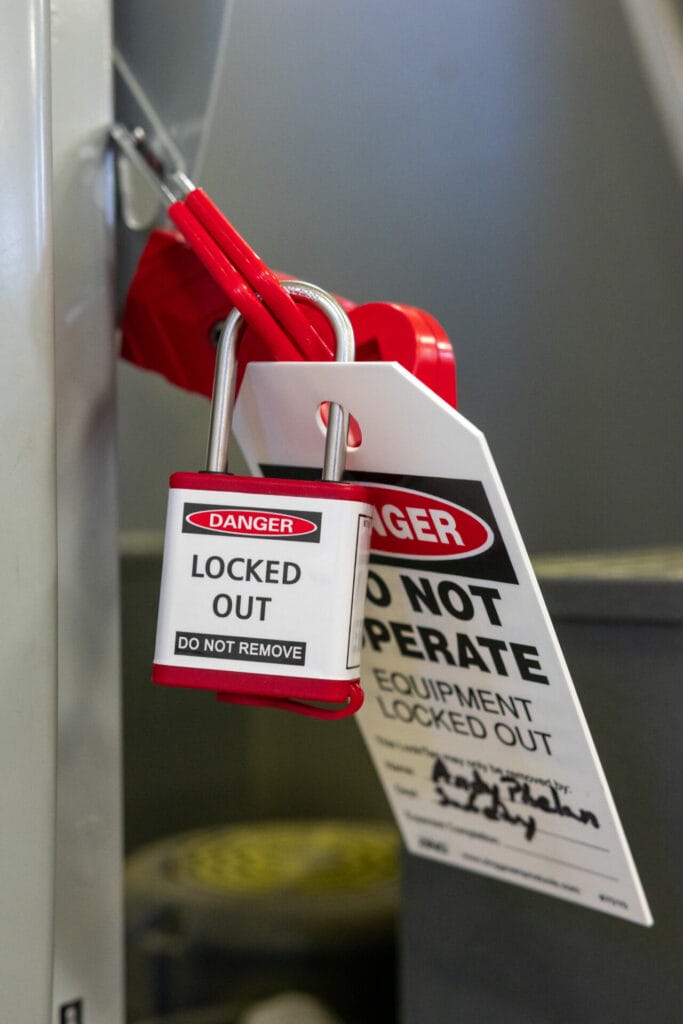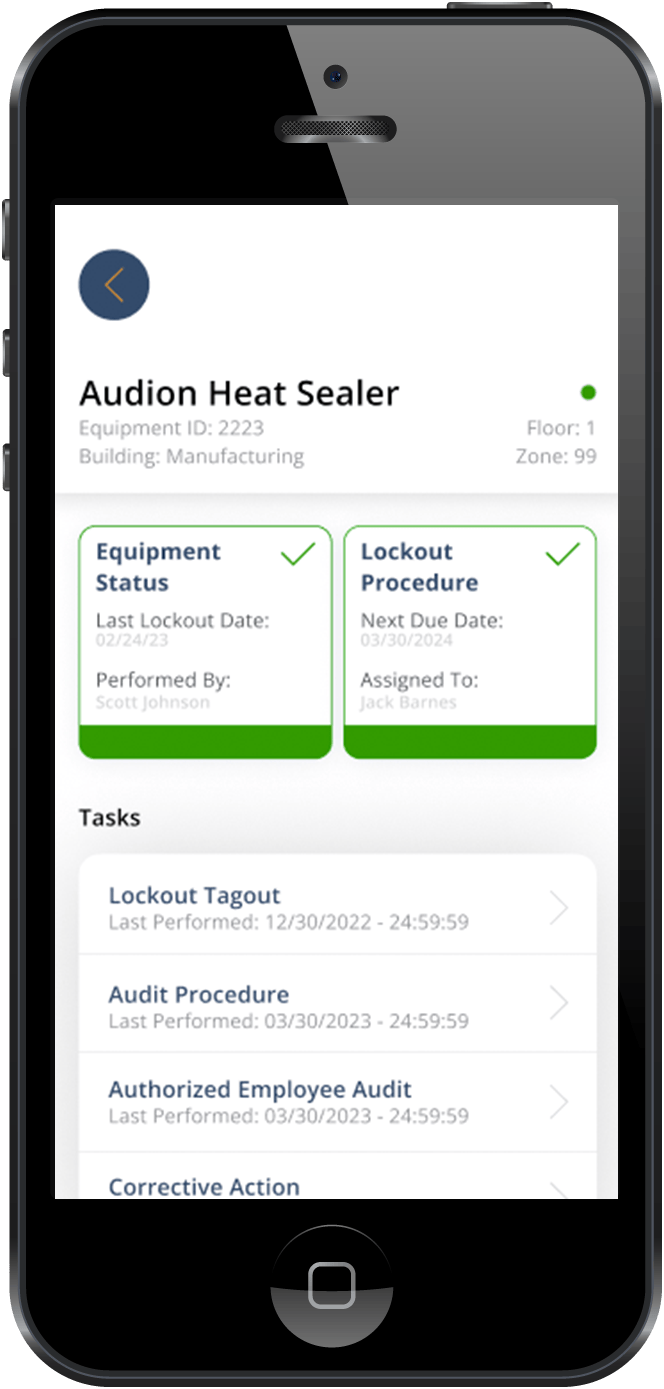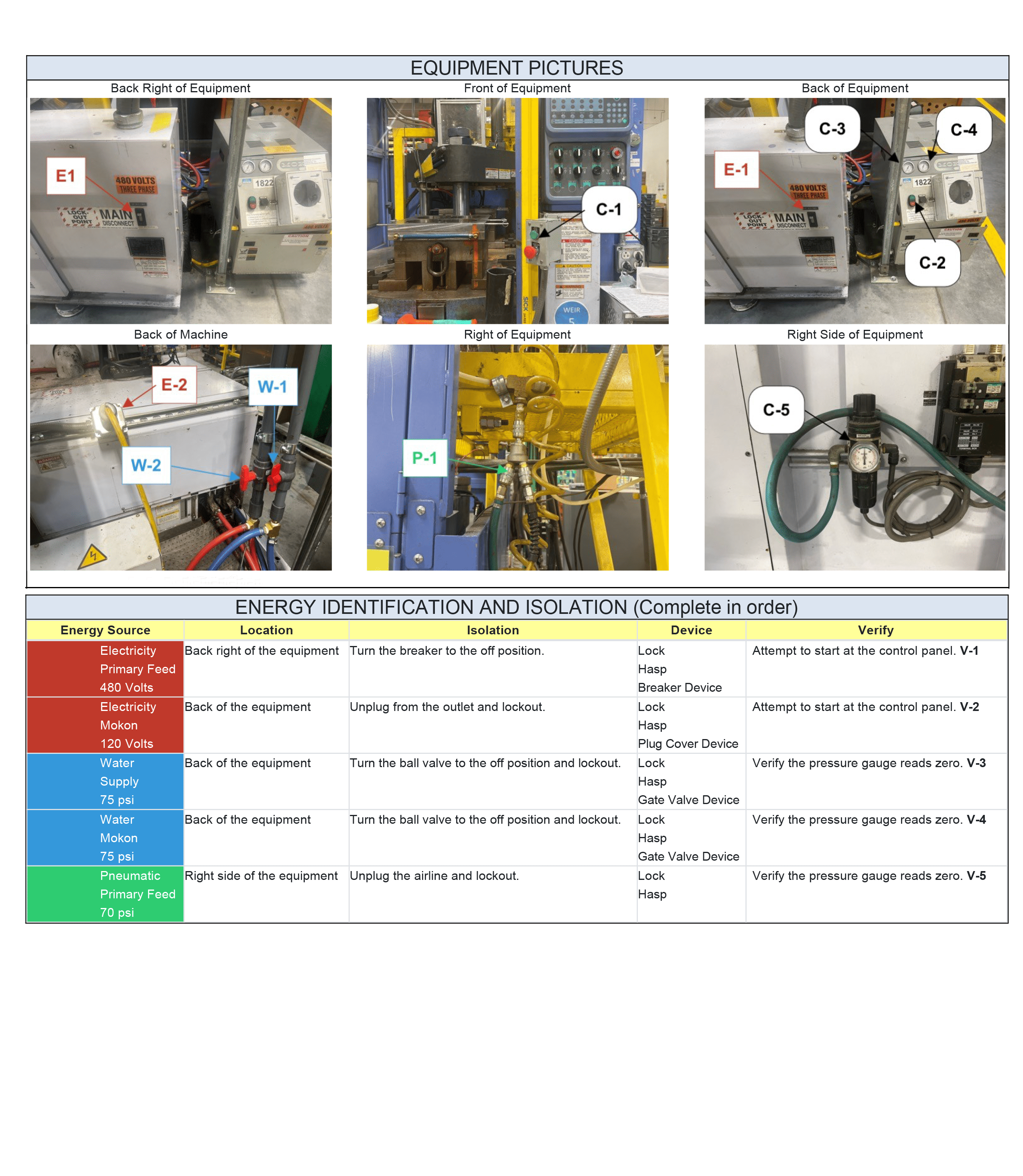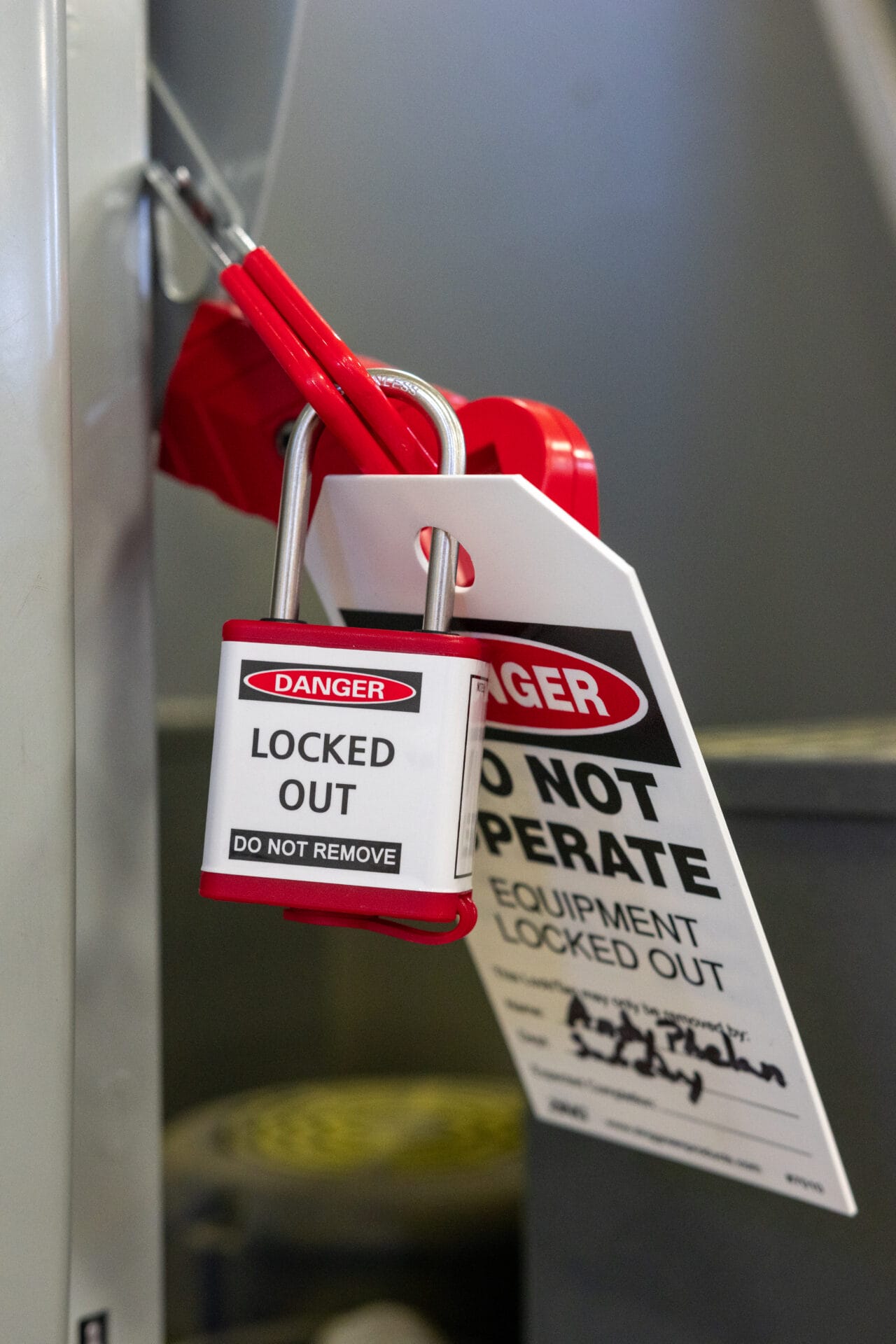Let’s dive into OSHA 1910.147, the regulation regarding lockout tagout compliance and its vital role in safeguarding lives.
In the complex landscape of workplace safety, the Occupational Safety and Health Administration (OSHA) in the United States has established stringent regulations to protect the well-being of employees.
Among these regulations, the Lockout-Tagout (OSHA 1910.147) standard stands out as a pivotal component in preventing accidents and injuries during maintenance or servicing of machinery and equipment.
This article highlights the purpose of this regulation, its key components, and the consequences and benefits regarding compliance to it.

What is OSHA?
OSHA is an acronym for “Occupational Safety and Health Administration”. It is an organization that is part of the US Department of Labor and was founded as a way to oversee the implementation of The Occupational Safety and Health Act of 1970. This law and resulting organization are responsible for ensuring that employers provide a working environment that is free of any known dangers.
What does OSHA standard 1910.147 regulate?
OSHA’s standard for The Control of Hazardous Energy (Lockout/Tagout) (OSHA 1910.147) is a regulation detailing the required safety measures for controlling hazardous energy.
In this regulation, the industry standard, Lockout Tagout, is clearly outlined so that employers in any field involving hazardous energy can maintain a safe workplace environment for their employees.
Key points and requirements of OSHA 1910.147
1. Scope:
The standard applies to the control of hazardous energy (such as electrical, mechanical, hydraulic, pneumatic, chemical, thermal, and other energy sources) during maintenance or servicing of machines and equipment.
2. Energy Control Program:
Employers are required to establish and implement an energy control program that includes written procedures for the isolation and control of energy sources. These procedures must be developed specifically for each piece of equipment.
3. Lockout/Tagout Devices:
Lockout devices (such as locks and hasps) and tagout devices (such as warning tags) are used to physically lock and tag energy isolation points to prevent the accidental startup of equipment.
4. Employee Training:
Employers must ensure that authorized employees (those performing maintenance or servicing) are trained on the energy control procedures, the purpose and use of lockout/tagout devices, and the importance of complying with the program.
5. Periodic Inspection:
Periodic inspections of the energy control procedures and compliance are necessary to verify their effectiveness.
6. Release of Energy:
Proper procedures must be followed when equipment is ready to be re-energized. All employees must be informed, and energy sources must be safely restored.
7. Exception for Minor Servicing:
There is an exception for minor servicing activities that do not expose employees to serious injury. In such cases, alternative safety measures may be used.
The goal of OSHA 1910.147 is to prevent accidents and injuries that can occur when workers are exposed to hazardous energy sources. Compliance with this standard is crucial for the safety of employees and to ensure that proper procedures are followed during maintenance or servicing activities. Employers and employees should be familiar with the specific requirements of the standard to maintain a safe working environment.
Why does compliance with OSHA 1910.147 matter?
Violating OSHA requirements can be equivalent to breaking US law. Because of this, there are severe repercussions for those who willfully choose not to comply.
Failure to implement or properly follow lockout tagout procedures in industrial settings can pose significant risks to the safety and well-being of workers, as well as causing financial and reputational damage to businesses.
However, it goes deeper than that. Consider this.
Actions speak louder than words. What do you want your actions to communicate to your team, clients, employees, and their families? How you choose to handle safety at your organization will speak volumes about the quality of service you can provide. Afterall, if you don’t take care of your own, who will you care for?
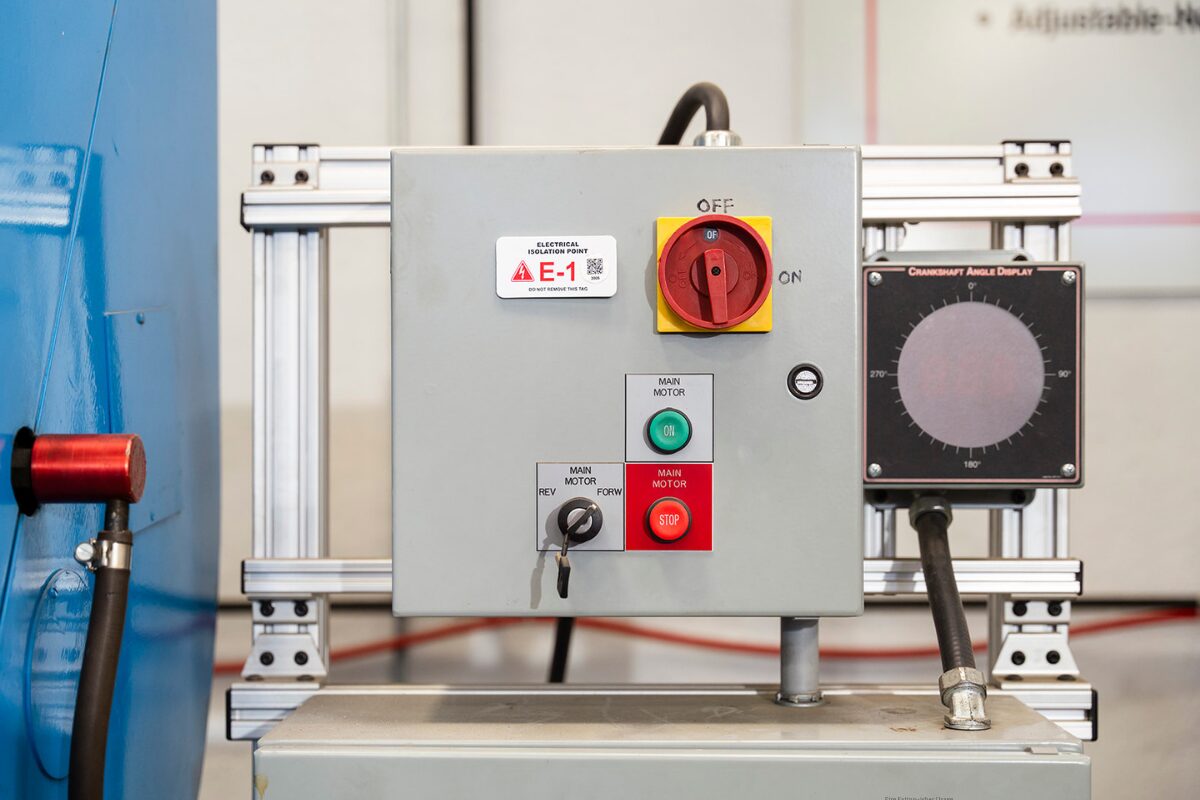
Potential consequences/benefits regarding OSHA 1910.147 compliance:
#1 Employee Safety
-
- Noncompliance Consequence : Death/Harm to Workers
-
- Employees servicing or maintaining machines or equipment may be exposed to serious physical harm or death if hazardous energy (such as electrical, mechanical, hydraulic, or pneumatic energy) is not properly controlled.
-
- Accidental energization of equipment or machinery during maintenance, repair, or servicing activities can result in electrocution, crushing, amputation, or other life-threatening injuries.
-
- Noncompliance Consequence : Death/Harm to Workers
-
- Compliance Benefit : Worker Safety and Well Being
-
- Compliance with the lockout/tagout standard prevents an estimated 120 fatalities and 50,000 injuries each year. These aren’t just numbers though. They are real people with stories, experiences and families that will benefit from intentional safety precautions being taken.
-
- Compliance Benefit : Worker Safety and Well Being
#2 Workplace Incident Frequency
-
- Noncompliance Consequence: Increased Incidents
-
- Failure to control hazardous energy effectively increases the likelihood of workplace accidents and incidents, including equipment malfunctions, unexpected machine starts, and uncontrolled releases of stored energy.
-
- These incidents not only harm workers directly involved but also pose risks to nearby personnel and may cause damage to property and equipment.
-
- Noncompliance Consequence: Increased Incidents
-
- Compliance Benefit: Decreased Incidents
-
- Reduced workplace incidents result in fewer injuries/deaths, overall improved efficiency, avoidance of legal issues, and more. Because of this, it is easy to understand why so many companies are willing to invest in their lockout tagout program.
-
- Compliance Benefit: Decreased Incidents
#3 Legal Standing
-
- Noncompliance Consequence: Fines and Legal Issues
-
- Non-compliance with lockout tagout regulations and standards, such as those established by OSHA (Occupational Safety and Health Administration) in the United States, can result in severe penalties, fines, and legal liabilities for businesses.
-
- On top of that, regulatory agencies may conduct inspections and investigations following workplace accidents, and failure to demonstrate compliance with lockout tagout requirements can lead to significant repercussions.
-
- Additionally, in the case of an incident, a family may choose to sue if there have been improper steps taken that contributed to the incident occurring. Legal battles such as this can be costly affairs that are well worth avoiding.
-
- Noncompliance Consequence: Fines and Legal Issues
-
- Compliance Benefit: Saved Money
-
- In general, the costs associated with preventative measures such as maintenance, repairs, and LOTO procedures are much lower than the ones that can be accumulated through non-compliance fines or legal battles. Making safety a top priority is a small price to pay for all the good it does.
-
- Compliance Benefit: Saved Money
#4 Operational Efficiency
-
- Noncompliance Consequence: Decreased Efficiency
-
- Workers injured on the job from exposure to hazardous energy lose an average of 24 workdays for recuperation. That is nearly 5 work weeks!
-
- And even in cases that are much less severe, accidents resulting from inadequate lockout tagout procedures can disrupt operations, leading to downtime, production delays, and decreased productivity.
-
- Equipment damage or malfunction caused by improper maintenance practices further exacerbates operational disruptions and may require costly repairs or replacement.
-
- Noncompliance Consequence: Decreased Efficiency
-
- Compliance Benefit: Increased Efficiency
-
- While LOTO procedures could be considered a disruption to operations, they are minor in their time cost compared with the delays that can be accrued due to death or injury from hazardous energy or machinery.
-
- In fact, these routine inspections can prolong machinery life, help avoid malfunctions, and encourage positive, productive work from employees.
-
- Compliance Benefit: Increased Efficiency
#5 Company Reputation
-
- Noncompliance Consequence: Damaged Reputation and Brand Image
-
- Incidents involving worker injuries or fatalities due to failure to implement lockout tagout procedures can damage a company’s reputation and brand image.
-
- It takes years of consistency and valuable work to develop a strong reputation. However, all that hard work can be undone in an instant with the occurrence of a singular accident.
-
- With that, negative publicity, media scrutiny, and public perception of workplace safety deficiencies can undermine stakeholder trust and confidence in the organization, impacting its long-term viability and competitiveness.
-
- Noncompliance Consequence: Damaged Reputation and Brand Image
-
- Compliance Benefit: Maintained Reputation and Brand Image
-
- It is much easier to maintain a positive brand image than to repair one that has been damaged. Once trust is lost, it is much harder to regain.
-
- By focussing your efforts on preventative action, you are safeguarding your institution from the backlash that can ensue from a serious incident. In the event that an accident occurs even with precautions being taken, society will be much more understanding of an organization that was intentional rather than negligent.
-
- Compliance Benefit: Maintained Reputation and Brand Image
#6 Employee Morale/Retention
-
- Noncompliance Consequence: Fearful and Distrustful Workers
-
- Workplace accidents resulting from inadequate safety measures can have a profound impact on employee morale, causing fear, anxiety, and distrust among workers.
-
- High rates of workplace injuries and fatalities may lead to employee dissatisfaction, turnover, and difficulty attracting and retaining skilled talent.
-
- Noncompliance Consequence: Fearful and Distrustful Workers
-
- Compliance Benefit: Trusting and Happy Workers
-
- Implementing proper safety protocol through Lockout Tagout is a way to communicate to your staff that they are valued. Workers who feel they are safe at work and cared for will be much more likely to stay with the company and praise it even after they leave.
-
- Compliance Benefit: Trusting and Happy Workers
What happens if you are not OSHA compliant?
Companies that are found in violation of OSHA standards may incur heavy fines. These fines can come from violating OSHA 1910.147 or any other OSHA standard. The value of these fines depends on the severity of the infraction. Below we will go into further detail about the types of OSHA violations and the consequences that are tied to them.
Types of violations and their associated penalties:
*Note: These values (current as of Jan 2025) may change over time with any adjustments made by the organization to account for inflation and other factors.
Other Than Serious Violation – This phrase refers to the violations that are related to health and safety but that are very unlikely to result in a fatality or severe physical harm to an individual. As of January 2023, financial penalties for this category averaged between $15,625 and $16,550 per violation.
Serious Violation – A violation is considered “serious” if there is a high chance of death or severe physical harm that could occur to a person as a result of the infringement. In these cases, it is understood that the employer was aware of or should have known the nature of the situation. Fines for serious violations are capped at $16,550.
Willful Violation – These violations are determined to be ones the employer has knowingly and intentionally been involved in. Employers fall into this category if they have knowingly condoned actions or circumstances that create a hazardous environment for their workers, whether through intentional action or neglectful management of an identified problem. Employers who are found willfully violating OSHA safety standards will face civil penalties that can be as large as $165,514 per violation.
Failure to Abate – These violations are given to employers who procrastinate correction. Companies that receive a re-inspection and have not fixed a previously-cited violation will be fined a maximum of $16,550 for every day that the issue is not resolved past the abatement date. Generally, this timeline is limited to 30 days.
Repeat Violation – Repeat violations are given to employers who have been cited for violating a rule, standard, or regulation are found committing a very similar violation upon re-inspection. To distinguish these from ‘Failure to Abate’ cases, repeat violations can only be given after the initial citation is finalized. Therefore, any citations that are currently under review cannot become repeat violations. However, for those to which this applies, fines can be as great as $165,514 for each violation.
Conclusion
In summary, OSHA 1910.147 is a safety standard that outlines how and why lockout tagout procedures should be implemented in workplaces. The potential consequences of not implementing or correctly following lockout tagout procedures extend beyond immediate safety risks to encompass legal, financial, operational, and reputational ramifications for businesses. Prioritizing compliance with lockout tagout regulations and ensuring rigorous adherence to safety protocols are essential for safeguarding worker health and well-being, minimizing workplace incidents, and protecting organizational interests.

